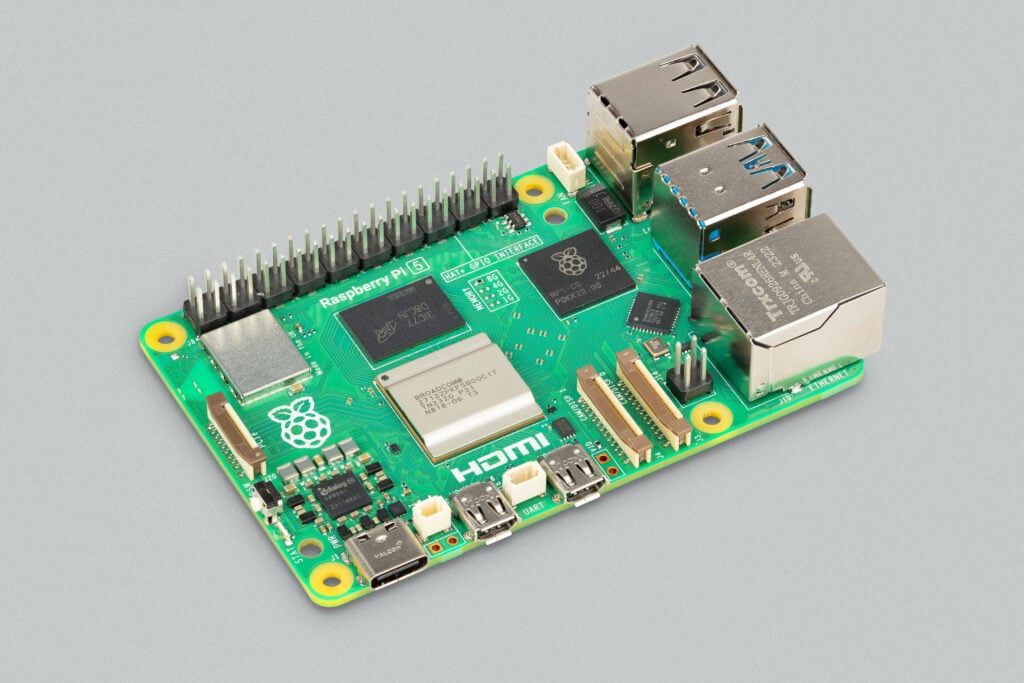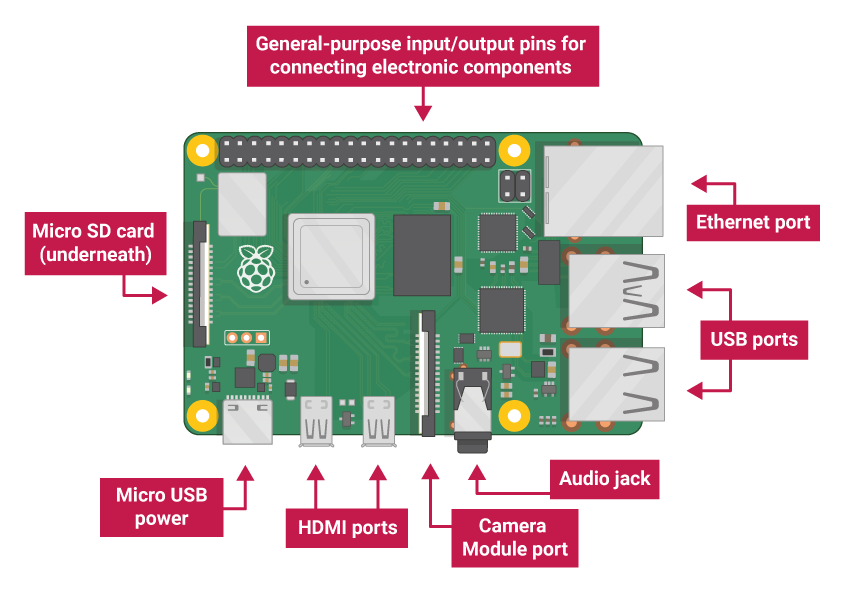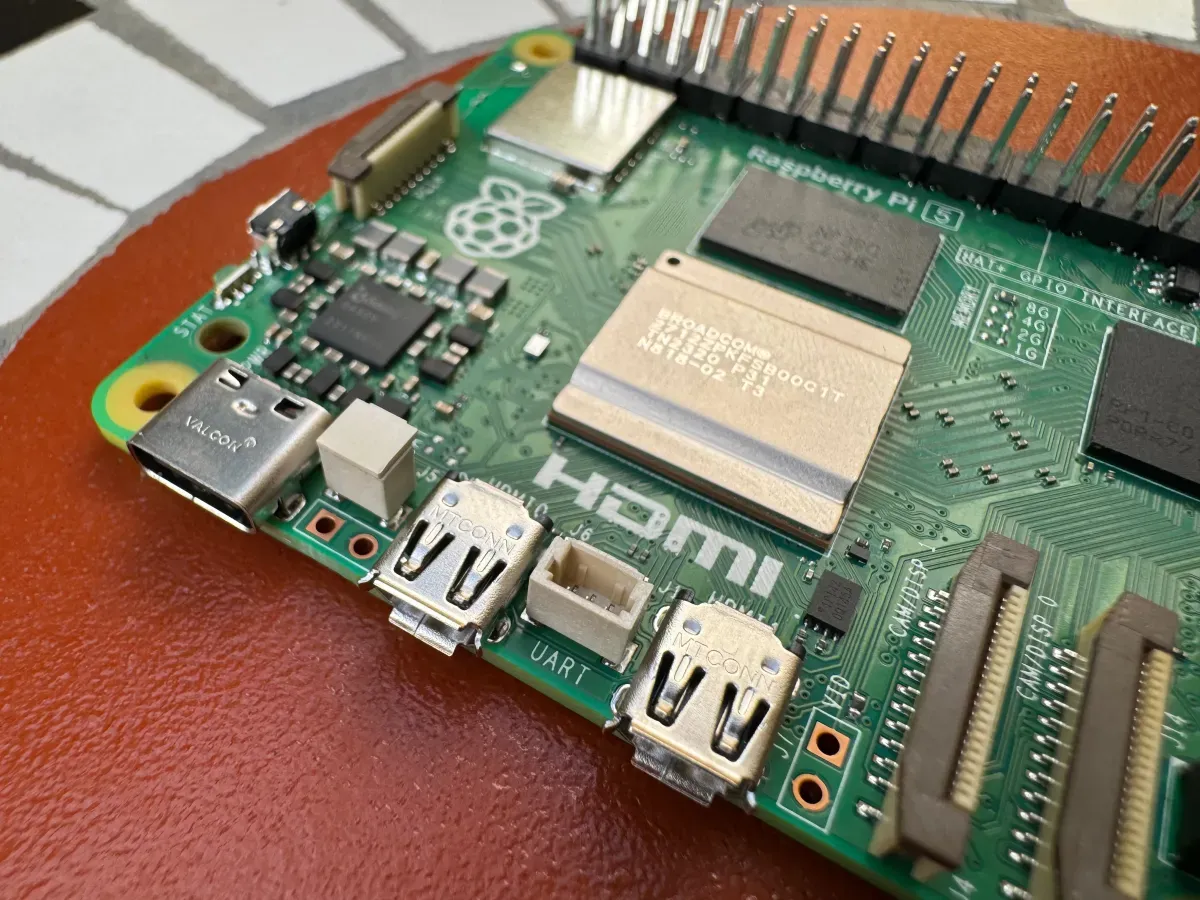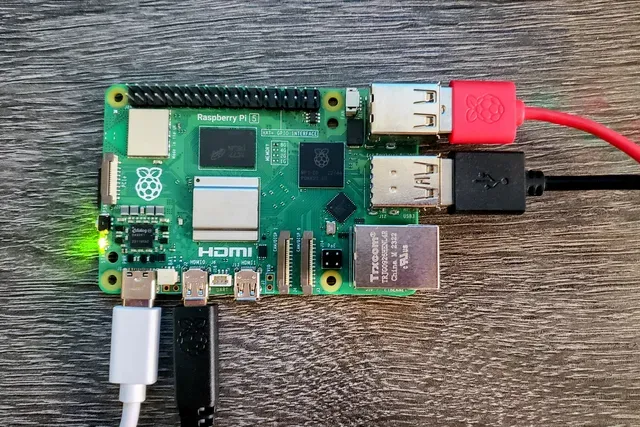The Raspberry Pi 5: A Deeper Look into the Next-Gen Single-Board Wonder
This latest iteration boasts a 64-bit quad-core Arm Cortex-A76 processor running at an impressive 2.4GHz.

Introduction
In the ever-evolving world of single-board computers, the Raspberry Pi series has stood out as a trailblazer since its inception in 2012. Now, four years after the release of the Raspberry Pi 4, the eagerly anticipated Raspberry Pi 5 has made its debut. In this blog, we will delve into the various aspects of the Raspberry Pi 5, exploring its upgraded features, enhanced specifications, and the significant leap it represents for the Raspberry Pi ecosystem.
The Raspberry Pi
The Raspberry Pi, introduced by the Raspberry Pi Foundation in 2012, is a game-changing single-board computer designed to make computing education accessible to everyone. Despite its diminutive size, the Raspberry Pi packs a substantial punch, featuring an ARM-based system on a chip (SoC), USB ports, HDMI output, and networking capabilities. Its affordability and versatility have made it a favorite among hobbyists, educators, and developers, spawning a global community dedicated to exploring its potential in a myriad of applications, from DIY projects and home automation to industrial uses.

What sets the Raspberry Pi apart is not just its hardware capabilities but the ethos behind it. The Foundation's commitment to democratizing computing education has resulted in a powerful, low-cost tool that empowers users of all ages and backgrounds. Its impact reaches beyond the classroom, fostering a collaborative ecosystem where individuals worldwide share knowledge, create innovative projects, and continually push the boundaries of what this credit-card-sized computer can achieve.
The Evolution of Raspberry Pi
Since its inception in 2012, the Raspberry Pi has evolved from a modest experiment to a revolutionary force in the world of single-board computing. The brainchild of the Raspberry Pi Foundation, these compact yet powerful devices were initially designed to provide an affordable platform for teaching computer science in schools. The first-generation Raspberry Pi featured a Broadcom BCM2835 system on a chip (SoC) with an ARM1176JZF-S processor, offering a glimpse of the potential within this credit-card-sized computer. As the foundation continued refining its vision, subsequent generations witnessed significant upgrades in processing power, memory, and connectivity, transforming the Raspberry Pi into a versatile tool embraced by hobbyists, educators, and industry professionals alike.

Over the years, the Raspberry Pi has transcended its educational roots to become a staple in various applications. Beyond the classroom, enthusiasts and developers harnessed the board's capabilities to create media servers, retro game consoles, interactive dashboards, and even industrial controllers. The introduction of Wi-Fi and Bluetooth support expanded its utility, while the Raspberry Pi 4, released in 2019, marked a major milestone with up to 8GB of RAM and dual 4K display support. This steady evolution, driven by a passionate community and the relentless pursuit of innovation by the Raspberry Pi Foundation, sets the stage for the highly anticipated Raspberry Pi 5, a testament to the enduring legacy of a project that has democratised computing on a global scale.
Raspberry Pi 5 Specifications
Let's dive into the heart of the matter – the specifications of the Raspberry Pi 5. This latest iteration boasts a 64-bit quad-core Arm Cortex-A76 processor running at an impressive 2.4GHz. The processor is complemented by 512KB per-core L2 caches and a 2MB shared L3 cache, ensuring a substantial performance boost compared to its predecessor.
Continuing the trend of connectivity improvements, the Raspberry Pi 5 supports Wi-Fi 5 (802.11ac), Bluetooth 5.0, Bluetooth Low Energy, and Gigabit Ethernet. The inclusion of two micro-HDMI ports allows users to connect two 4K displays with a 60Hz refresh rate and HDR support, elevating the device's multimedia capabilities.
USB connectivity remains robust, with two full-size USB 3.0 ports supporting simultaneous 5Gbps transfer speeds and two full-size USB 2.0 ports. The power port has transitioned to USB-C, a contemporary choice in line with current industry standards.
PCIe 2.0 Interface and Custom Silicon
One of the standout features of the Raspberry Pi 5 is the introduction of a new single-lane PCIe 2.0 interface, a first for the Raspberry Pi series. While this opens up exciting possibilities for adding PCI Express peripherals, users will need a HAT extension (Hardware Attached on Top) or an adapter to leverage this interface fully.

Moreover, the Raspberry Pi 5 marks a significant milestone as the first full-size Raspberry Pi to incorporate custom silicon – the RP1. Functioning as a southbridge chip, the RP1 handles I/O functions, replacing some functions previously managed by the main system on a chip. Raspberry Pi CEO Eben Upton describes it as a chip that takes over the 'I/O controller' socket, a role previously occupied by third-party components. This move allows the Raspberry Pi team to exert greater control over its components and marks a strategic step towards vertical integration.
Performance Boost and Graphics Power
The Raspberry Pi 5 is not just about new interfaces and custom silicon; it also delivers a substantial boost in performance. Powered by a 64-bit quad-core Arm Cortex-A76 processor running at 2.4GHz, users can expect two to three times the performance compared to the Raspberry Pi 4. This enhanced processing power is complemented by an 800MHz VideoCore VII graphics chip, promising a noteworthy uplift in graphics performance.
In practical terms, users report quick boot times and fast webpage loading, showcasing the improved efficiency of the Raspberry Pi 5. The inclusion of an active cooling component, provided by Raspberry Pi, helps manage the device's temperature, ensuring optimal performance.
Peripheral Performance and Connectivity
The RP1 southbridge chip plays a crucial role in enhancing peripheral performance and functionality. With faster transfer speeds to external UAS (USB Attached SCSI) drives and other peripherals, the Raspberry Pi 5 becomes a more capable and versatile computing platform.

The device introduces two four-lane 1.5Gbps MIPI transceivers, enabling users to connect up to two cameras or displays simultaneously. Additionally, the inclusion of a single-lane PCI Express 2.0 interface opens the door to high-bandwidth peripherals, although users will need separate adapters such as an M.2 HAT to take full advantage of this feature.
Ports, Displays, and Other Features
In terms of ports, the Raspberry Pi 5 maintains a comprehensive set, including dual 4Kp60 HDMI display outputs with HDR support, a microSD slot, two USB 3.0 ports, two USB 2.0 ports, gigabit Ethernet, and a 5V DC power connection via USB-C. Bluetooth 5.0 and Bluetooth Low Energy support further enhance the device's connectivity options.
Notably, the microSD card slot's performance has been doubled, providing users with faster data access. These enhancements make the Raspberry Pi 5 a more appealing choice for various applications, from ultra-budget desktop PCs to media servers and even DIY security systems.
Pricing and Availability
The Raspberry Pi 5 will be available in two variants – one with 4GB of RAM priced at $60 and an 8GB version priced at $80. While the entry price is higher than its predecessor, the Raspberry Pi 4, the latter will continue to be available with 1GB, 2GB, 4GB, or 8GB of RAM. When comparing models with the same amount of RAM, the Raspberry Pi 5's pricing represents a modest increase of $5.

Raspberry Pi CEO Eben Upton assures that the Raspberry Pi 5 will remain in production until 2035, showcasing the commitment to meeting the sustained demand for this versatile computing platform. Production ramps are underway, with plans to build a significant number of Raspberry Pi 5 units before Christmas, alongside continued production of Raspberry Pi 4 and earlier models.
Conclusion
The Raspberry Pi 5 emerges as a formidable successor, building on the success of its predecessors while introducing groundbreaking features that cater to the evolving needs of the user community. From the performance boost facilitated by the 64-bit quad-core processor to the introduction of custom silicon and the inclusion of new interfaces, the Raspberry Pi 5 positions itself as a versatile and powerful tool for a wide range of applications. As it enters the market, the Raspberry Pi 5 is set to continue the legacy of its predecessors, empowering enthusiasts, hobbyists, and professionals alike to explore the boundless possibilities of single-board computing.





